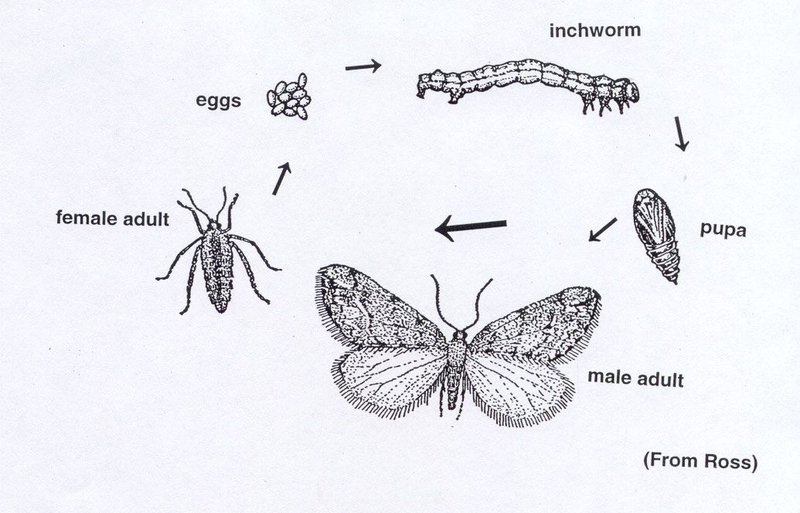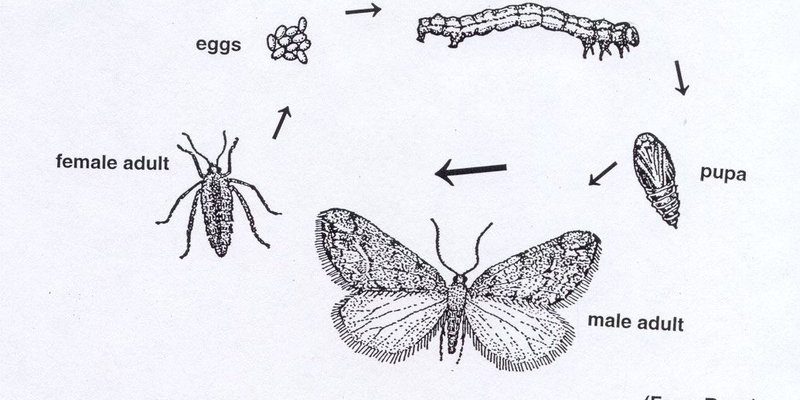
Inchworms are actually the larvae of moths from the Geometridae family. Their movements resemble the act of measuring, hence the name “inchworm.” While there are several species, they generally share similar lifecycle stages, much like different chapters in a book. So, grab a cup of coffee, and let’s explore the lifecycle timelines of common inchworm species together!
The Inchworm Lifecycle: An Overview
Inchworms undergo a complex transformation throughout their lives, which can be broken down into four main stages: egg, larva, pupa, and adult moth. Each stage has distinct characteristics and important functions in helping the inchworm thrive.
1. Egg Stage: The lifecycle begins when a female moth lays eggs, typically on the underside of leaves. You might be surprised to learn that inchworm eggs can vary in appearance — some are round, while others are more elongated. Depending on the species, these eggs might hatch into tiny larvae in about a week or two.
2. Larvae Stage: Once the eggs hatch, the inchworms emerge as larvae. This is the stage most people recognize; they’re the little green or brown caterpillars that move in that unique looping manner. During this time, they munch on leaves, storing up energy for their next transformation. Interestingly, different species have different feeding habits and preferences.
3. Pupal Stage: After a few weeks of feeding and growing, inchworms enter the pupal stage. They often find a safe place to attach themselves, like a twig, and spin a silk cocoon. This time is crucial, as the inchworms undergo significant changes inside the cocoon. You might find it fascinating that this transformation can last anywhere from a few weeks to several months, depending on the species and environmental conditions!
4. Adult Moth Stage: Finally, after their metamorphosis is complete, the new moths emerge from their cocoons. This is where the life cycle comes full circle. Adult moths usually live for just a couple of weeks, during which they mate and lay eggs, starting the cycle anew. It’s a beautiful reminder of nature’s endless cycles.
Common Inchworm Species
While there are many species of inchworms, some of the most common ones include the Eastern Tent Caterpillar, the Fall Webworm, and the Lonomia Dispar. Each of these species has its own unique lifecycle timeline and habitats. Let’s explore a few of them in more detail.
1. Eastern Tent Caterpillar
The Eastern Tent Caterpillar is commonly found in North America. These inchworms are known for their social behavior, forming large webs in the forks of trees. The lifecycle starts in early spring when females lay their eggs in masses. The eggs hatch in about two weeks, leading to a lively group of larvae that feast on leaves until they’re ready to pupate in late spring.
2. Fall Webworm
Unlike the Eastern Tent Caterpillar, the Fall Webworm typically spins its webs later in the year, around mid-summer. After hatching, the larvae create webs that eventually cover entire branches, which protects them as they feed. This species can have multiple generations in a single season, with each generation lasting 5-6 weeks from egg to adult.
3. Lonomia Dispar
The Lonomia Dispar, or the Giant Silkworm Moth, is another intriguing inchworm. It thrives in wooded areas and is known for its striking appearance. Its larvae can take longer to mature, sometimes up to several months. The adult moths have a relatively short lifespan but play a crucial role in the ecosystem by pollinating plants.
The Importance of Inchworms in the Ecosystem
Inchworms play a vital role in their habitats. As herbivores, their munching helps control plant growth and provides food for various predators, including birds and other insects. This creates a balance in the ecosystem, ensuring that no single species dominates.
Moreover, as inchworms transition into moths, they become essential pollinators. This means they help many plants reproduce, contributing to biodiversity. If you think about it, inchworms exemplify how even the tiniest creatures can have a huge impact on their environment.
Challenges Faced by Inchworms
Despite their crucial roles, inchworms face several challenges. Habitat loss, climate change, and pesticide use can dramatically affect their populations. Various predators, like birds and spiders, also hunt them, making survival tough.
You might be wondering how you can help these little critters. One way is to create a more insect-friendly garden. Planting native flowers and avoiding pesticides can support inchworm populations and, by extension, the entire ecosystem.
How to Observe Inchworms
If you’re interested in observing inchworms, it’s fairly simple! Start by exploring your garden or nearby parks during their active seasons (spring and summer):
1. Look for webs – Many inchworm species create visible webs, which can guide your search.
2. Check the leaves – Inspect the underside of leaves for eggs or tiny larvae.
3. Be patient – Inchworms can be tricky to spot since they blend in with their surroundings.
Watching these little creatures can be a rewarding experience, allowing you to connect with nature in a new way.
Wrapping It Up
Inchworms are more than just cute, squirmy critters. Their lifecycle timelines, from eggs to adult moths, illustrate the fascinating complexity of nature. By understanding their life stages, habitats, and roles in the ecosystem, we can better appreciate their place in our world.
As you think about the lifecycle of inchworms, remember that every creature, big or small, contributes to the beauty and balance of our environment. So next time you see an inchworm inching along, take a moment to appreciate its incredible journey!

